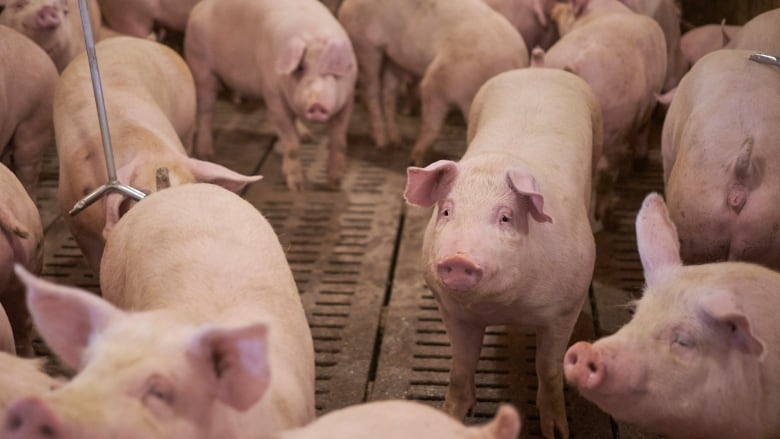Swine Fever in Asia Largest Animal Disease Outbreak in History

Millions of pigs have been culled in China and Vietnam as a U.N. food agency urges Asian governments to make containing virulent African swine fever their top priority
by Hau Dinh And Sam McNeil – The Associated Press
With an announcement by the U.N. Food and Agricultural Organization that infections have spread to Laos, some experts are saying it is the largest animal disease outbreak in history.
The FAO said in a report late Thursday that more than 3.7 million pigs in the region had been culled since the outbreak began in China last August. Vietnam has been the hardest hit, culling at least 2.6 million pigs followed by China, which reported more than 1.1 million. All the figures were provided to the FAO by governments of countries affected by the epidemic.
Smaller outbreaks have been reported in Hong Kong, Taiwan, North Korea, Cambodia and Mongolia after cases were first reported in China’s northeast in August.
“This is the largest animal disease outbreak in history,”says Dirk Pfieffer, a veterinary epidemiologist at the City University of Hong Kong. “We’ve never had anything like it.”
African swine fever is harmless to people but fatal and highly contagious for pigs, with no known cure.
With pork supplies dwindling as leading producer China and hard-hit Vietnam destroy huge numbers of hogs and tighten controls on shipments, prices have soared by up to 40% globally and caused shortages in other markets.
In South Korea, where diets rely heavily on pork, there is concern an outbreak could hurt an industry with 6,300 farms raising more than 11 million pigs.
“Animal disease containment in its broadest sense should be prioritized within the highest levels of governments,” the FAO said, warning, “Outbreak control strategies must be in place.”
China has reported 139 outbreaks in all but two of its 34 provinces.
The U.S. Department of Agriculture forecasts its total hog herd will shrink by 18 per cent this year to 350 million animals, the lowest since the 1980s. This year’s Chinese pork output might fall by up to 35 per cent, according to Rabobank, a Dutch bank.
Vietnam reported in mid-May that 1.2 million pigs, or about 5 per cent of its total 30 million, an industry worth $18 billion, had died or been destroyed. FAO said Thursday that number had more than doubled to 2.6 million. Military and police were mobilized to help contain the outbreak, officials said.
Rabobank expects Vietnamese pork production to fall 10 per cent this year from 2018.
The mass culling in Vietnam could sink many farmers deeper into poverty, said Wantanee Kalpravidh, a regional co-ordinator of the FAO’s Emergency Center for Transboundary Animal Disease.
Last month, Prime Minister Nguyen Xuan Phuc urged authorities to prevent the disease, found in 58 of 63 provinces, from escalating into an epidemic.
In My Duc, a suburb of Hanoi, disinfecting lime powder has been scattered around empty pig farms and checkpoints were set up to control shipments.
“We have to prevent and fight this disease like fighting an enemy,” Phuc told Cabinet officials.
Farmer Nguyen Van Hoa lamented that only three pigs had died from the fever but authorities culled 40 of his pigs. They were among 14,000 hogs buried in My Duc district in the past month.
About 2.4 million Vietnamese households engage in small-scale pig farming.
In Cambodia, more than 2,400 pigs have died or were culled since April in an eastern province bordering Vietnam, the FAO said.
Sem Oun, a 58-year-old farmer and father of two in Ta Prum, a village near the capital Phnom Penh, frets that the illness could spread from Vietnam.
“I don’t have any other job and my income that provides for my entire family relies solely on these pigs. If they die because of swine flu then everybody in the family will die too,” he told The Associated Press.
Hong Kong authorities have killed 10,700 pigs in two outbreaks, including one triggered by an animal imported from the mainland that was found to be infected. Two dead pigs infected with a virus similar to those in mainland Chinese were found in Taiwan, the FAO says.
Epidemic fighting efforts have gotten entangled in regional geopolitics.
North Korea scaled back co-operation with South Korea after the collapse of a February summit between North Korean leader Kim Jong Un and President Donald Trump, hampering joint work on stemming the spread of the disease following an outbreak near North Korea’s border with China.
South Korea’s agricultural ministry said that blood tests of pigs from some 340 farms near the border with the North were negative. Fences and traps have been installed near farms to protect hogs from being infected by wild boars that roam the inter-Korean border.
The North’s official Rodong Sinmun newspaper said quarantine efforts were focused on disinfecting farms and transport vehicles, restricting visitors, and banning the distribution of food products containing pork. Its references to nationwide quarantine efforts suggest the disease may have spread beyond regions near China.
Thailand and other countries still free of infections have taken strong preventive actions, including banning importation of pork, sausages, ham, or bacon.
Sorawit Taneeto, director-general of Thailand’s Department of Livestock Development, urged people to co-operate with soldiers at checkpoints in border provinces and quarantine areas. Airports are using more dogs like beagles to help in luggage inspections.












